What are the holidays of Panama?
Alan Stone - Pedasi Palms | Gated Condominium Community
Here is a list of the public holidays in Panama.
. January 1, New Year's Day
· January 9, Martyrs' Day (Panama)
· Carnival's Monday. The Monday before Ash Wednesday.
· Carnival's Tuesday. The Tuesday before Ash Wednesday.
· Holy Friday - Good Friday - Death of Christ
· May 1, May...
Here is a list of the public holidays in Panama.
. January 1, New Year's Day
· January 9, Martyrs' Day (Panama)
· Carnival's Monday. The Monday before Ash Wednesday.
· Carnival's Tuesday. The Tuesday before Ash Wednesday.
· Holy Friday - Good Friday - Death of Christ
· May 1, May Day - Labor Day
· November 3. Separation Day (from Colombia).
· November 4. Flag Day
· November 5. Colon Day
· November 10. "Primer Grito de Independencia de la Villa de los Santos" The uprising in the Villa de los Santos against Spain.
· November 28. Independence Day (from Spain).
· December 8. Mothers' Day
. December 25. Christmas
Remember the festive and lively people of Panama really celebrate their holidays with parties and parades. Holidays are always a good time to experience the local culture.
Posted April 9, 2013
Tim Rowley - Web-4-Panama | Marketing and Creative Agency
The month of November is pretty frustrating if you're actually trying to get something done here. It's the wettest month of the year and one holiday seems to run into the next.
The month of November is pretty frustrating if you're actually trying to get something done here. It's the wettest month of the year and one holiday seems to run into the next.
Posted August 7, 2013
Lourdes Townshend
In addition to Mr. Stone´s complete answer, I´ll like to add that sometimes the dates of the holidays are transferred to make a long weekend. Also during carnival, independence and Holy Week holidays, pretty much everything is closed, and locals go to their country houses to enjoy these days off. And, usually, because these times are high season, airline tickets and hotels are slightly higher.
In addition to Mr. Stone´s complete answer, I´ll like to add that sometimes the dates of the holidays are transferred to make a long weekend. Also during carnival, independence and Holy Week holidays, pretty much everything is closed, and locals go to their country houses to enjoy these days off. And, usually, because these times are high season, airline tickets and hotels are slightly higher.
Posted August 8, 2013
Bob Gugel - Origen Real Estate Panama
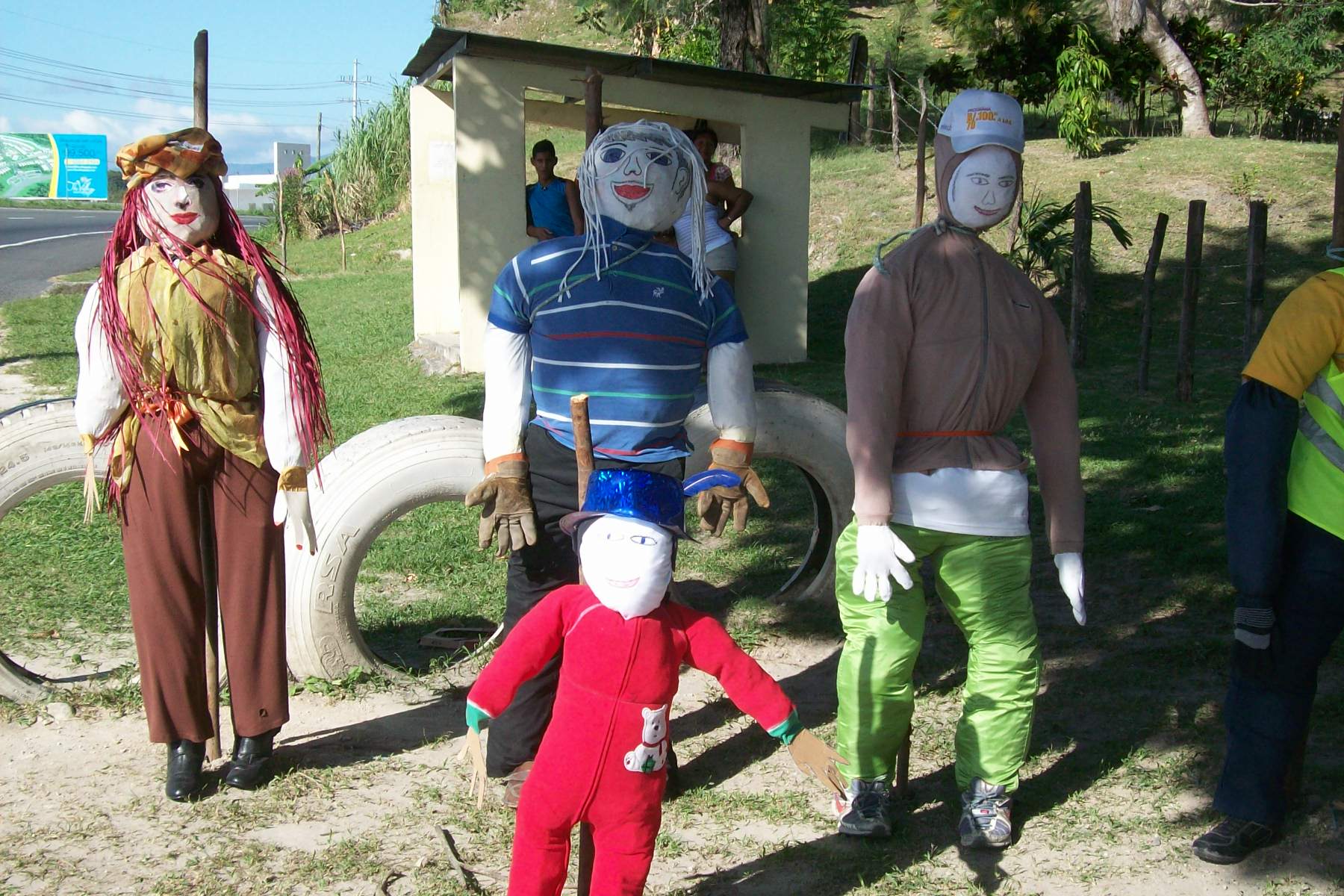 Panamanians love holidays and they celebrate them enthusiastically. Besides the holidays like Christmas, Easter, and Halloween, celebrated throughout the world, the Republic of Panama celebrates a number of its own holidays. With a large Jewish population, Jewish holidays also play a prominent place in Panamanian culture.
Panamanians love holidays and they celebrate them enthusiastically. Besides the holidays like Christmas, Easter, and Halloween, celebrated throughout the world, the Republic of Panama celebrates a number of its own holidays. With a large Jewish population, Jewish holidays also play a prominent place in Panamanian culture. New Year’s is huge in Panama with hundreds of fireworks in Panama City and the Interior. One unusual custom practiced in the San...
 Panamanians love holidays and they celebrate them enthusiastically. Besides the holidays like Christmas, Easter, and Halloween, celebrated throughout the world, the Republic of Panama celebrates a number of its own holidays. With a large Jewish population, Jewish holidays also play a prominent place in Panamanian culture.
Panamanians love holidays and they celebrate them enthusiastically. Besides the holidays like Christmas, Easter, and Halloween, celebrated throughout the world, the Republic of Panama celebrates a number of its own holidays. With a large Jewish population, Jewish holidays also play a prominent place in Panamanian culture. New Year’s is huge in Panama with hundreds of fireworks in Panama City and the Interior. One unusual custom practiced in the San Carlos region is the making of dummies often resembling people they didn’t like, such as politicians or police officers, filling them with fireworks and blowing them up.
Martyrs' Day is a Panamanian holiday which commemorates the January 9, 1964 riots over sovereignty of the Panama Canal Zone, in which about 21 Panamanians and four U.S. soldiers were killed.
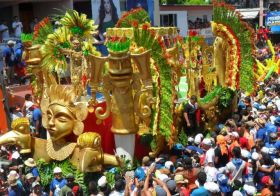 Carnaval, like Mardi Gras, is celebrated the four days before Ash Wednesday. Holy Week is a special time in Catholic Panama with most everything closing on Monday, Thursday, and Good Friday.
Carnaval, like Mardi Gras, is celebrated the four days before Ash Wednesday. Holy Week is a special time in Catholic Panama with most everything closing on Monday, Thursday, and Good Friday. Like most places in the world other than the US, Labor Day is observed on May 1. In Panama, all workers are on holiday. Banks, commerce centers, government offices, and services are closed. It’s mostly just casinos and bars that are open.
Almost all patriotic holidays in Panama are celebrated in November. Separation from Colombia 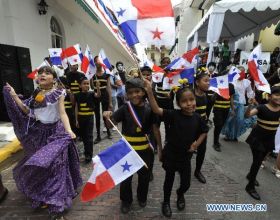 is celebrated on November 3rd. Flag Day is celebrated the next day when Panama’s first flag was unfurled. Colón Day follows on November 5th, which is Panama’s version of Columbus Day. It commemorates Christopher Columbus’s (Cristóbal Colón’s) arrival to the Americas. On November 10th, 1821, preceding the formal Independence from Spain, villagers in the town of Villa de Los Santos (a small town in the interior of Panama) gave out the first cry for independence. The month ends with the celebration of Independence from Spain on the 28th.
is celebrated on November 3rd. Flag Day is celebrated the next day when Panama’s first flag was unfurled. Colón Day follows on November 5th, which is Panama’s version of Columbus Day. It commemorates Christopher Columbus’s (Cristóbal Colón’s) arrival to the Americas. On November 10th, 1821, preceding the formal Independence from Spain, villagers in the town of Villa de Los Santos (a small town in the interior of Panama) gave out the first cry for independence. The month ends with the celebration of Independence from Spain on the 28th.
 is celebrated on November 3rd. Flag Day is celebrated the next day when Panama’s first flag was unfurled. Colón Day follows on November 5th, which is Panama’s version of Columbus Day. It commemorates Christopher Columbus’s (Cristóbal Colón’s) arrival to the Americas. On November 10th, 1821, preceding the formal Independence from Spain, villagers in the town of Villa de Los Santos (a small town in the interior of Panama) gave out the first cry for independence. The month ends with the celebration of Independence from Spain on the 28th.
is celebrated on November 3rd. Flag Day is celebrated the next day when Panama’s first flag was unfurled. Colón Day follows on November 5th, which is Panama’s version of Columbus Day. It commemorates Christopher Columbus’s (Cristóbal Colón’s) arrival to the Americas. On November 10th, 1821, preceding the formal Independence from Spain, villagers in the town of Villa de Los Santos (a small town in the interior of Panama) gave out the first cry for independence. The month ends with the celebration of Independence from Spain on the 28th. Panama celebrates Mother’s Day on December 8th. Panama is the only country in the world to have chosen this date. It is linked with a highly-revered event from the Catholic calendar, namely the Observance of the Immaculate Conception, which honors the Virgin Mary.
Posted May 5, 2014
Shai Gold - International-Triage Medical Networks
The Republic of Panama has about 45 "State Holidays" and is the only nation with two independence days (Separation Day from Colombia and then another "real" Independence day). If you think that 45 days is too many....note that the number of holidays was higher at one time, but the politicians agreed that it renderers the nation uncompetitive.
Holidays are celebrated en force, usually with a mass exodus from the city [Panama City]...
The Republic of Panama has about 45 "State Holidays" and is the only nation with two independence days (Separation Day from Colombia and then another "real" Independence day). If you think that 45 days is too many....note that the number of holidays was higher at one time, but the politicians agreed that it renderers the nation uncompetitive.
Holidays are celebrated en force, usually with a mass exodus from the city [Panama City] to the "interior and the playa" (the hinterland cities, villages and the beaches). It is highly recommended to leave one day before the actual holiday, as otherwise one finds onself trapped in endless traffic jams. For us city folk, the holidays give a nice balance to the hectic life of the city.
Enjoy Panama!
Posted May 7, 2014
Charles Conn - The Visitor
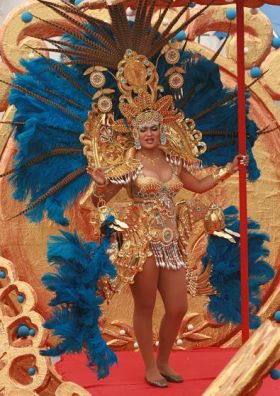 November is the month when most holidays in Panama take place. Independence Day (or Separation from Colombia) is on the 3rd of November. November 4th is Flag Day. November 5th is a special day in the province of Colon, when they prevented Colombia from taking Panama back again. So, in Panama, we have three days of Independence celebrations. They nicknamed the month of November as “The Month of Independence” because Panama celebrates its independence from Spain on the...
November is the month when most holidays in Panama take place. Independence Day (or Separation from Colombia) is on the 3rd of November. November 4th is Flag Day. November 5th is a special day in the province of Colon, when they prevented Colombia from taking Panama back again. So, in Panama, we have three days of Independence celebrations. They nicknamed the month of November as “The Month of Independence” because Panama celebrates its independence from Spain on the... November is the month when most holidays in Panama take place. Independence Day (or Separation from Colombia) is on the 3rd of November. November 4th is Flag Day. November 5th is a special day in the province of Colon, when they prevented Colombia from taking Panama back again. So, in Panama, we have three days of Independence celebrations. They nicknamed the month of November as “The Month of Independence” because Panama celebrates its independence from Spain on the 28th of November, another national holiday.
November is the month when most holidays in Panama take place. Independence Day (or Separation from Colombia) is on the 3rd of November. November 4th is Flag Day. November 5th is a special day in the province of Colon, when they prevented Colombia from taking Panama back again. So, in Panama, we have three days of Independence celebrations. They nicknamed the month of November as “The Month of Independence” because Panama celebrates its independence from Spain on the 28th of November, another national holiday. During the month of December, we have a special Mother’s Day, which is celebrated on the 8th, and which is a day off for everyone. You know how Latin people are about their mothers. Everybody gets off of work, it is a big deal with the TV shows and there are special themed dinners everywhere.
We also have the Carnivals. I used to participate more in them as a kid, but I don’t do it anymore. As a country, Panama highlights Carnival now as a tourist attraction. This is good because everything now is centralized. As an example, the city Carnival takes place along the Coastal Strip (Cinta Costera). Here, you will have as many as three stages set up where all kinds of musical artists perform.
One of things you’ll see that is typical during the Carnival are the water trucks that go by and hose people down, usually a fire truck with high-pressure water. Some people party all day and all night and they yell “Agua! Agua!” (Spanish for water), and then they get doused. There is drinking on the streets, dancing to music, and then all of a sudden, they are soaking wet. When this national holiday rolls around, nothing else happens.
As the entire country is partying, it’s best to plan well in advance if you wish to secure accommodations in the rural parts of town. For many Panamanians, the real Carnival takes place in the country side, also known as “the interior.”
La Villa de los Santos is the main town to visit. Located in the province of Los Santos, this area is the cradle of Panama’s traditional culture. You will see a lot of people dressed up in the national attire. The ladies wear polleras and the men wear montunos and the parades are nonstop. Another town in the area, in Las Tablas, they have Calle Arriba (the High Street) and Calle Abajo (the Low Street), which compete against each other for having the best party. They both have their own queen and they have parades with live music and fireworks. Each faction goes “all out” just to see which queen is the better queen each year.
Posted March 15, 2015
Elcira Maimone
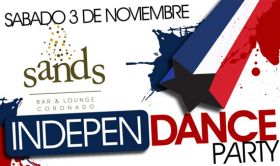 On November 3rd, 4th 5th, 10th, and 28th we celebrate Fiestas Patrias, which is when the country celebrates its independence from Colombia and Spain, and all the efforts that were made for Panama to be an independent country. During Fiestas Patrias, most people from Panama City go to the interior (provinces) to enjoy activities on the beach, the rivers, etc., and most businesses are closed.
On November 3rd, 4th 5th, 10th, and 28th we celebrate Fiestas Patrias, which is when the country celebrates its independence from Colombia and Spain, and all the efforts that were made for Panama to be an independent country. During Fiestas Patrias, most people from Panama City go to the interior (provinces) to enjoy activities on the beach, the rivers, etc., and most businesses are closed. We also celebrate Carnivales in February, which is similar...
 On November 3rd, 4th 5th, 10th, and 28th we celebrate Fiestas Patrias, which is when the country celebrates its independence from Colombia and Spain, and all the efforts that were made for Panama to be an independent country. During Fiestas Patrias, most people from Panama City go to the interior (provinces) to enjoy activities on the beach, the rivers, etc., and most businesses are closed.
On November 3rd, 4th 5th, 10th, and 28th we celebrate Fiestas Patrias, which is when the country celebrates its independence from Colombia and Spain, and all the efforts that were made for Panama to be an independent country. During Fiestas Patrias, most people from Panama City go to the interior (provinces) to enjoy activities on the beach, the rivers, etc., and most businesses are closed. We also celebrate Carnivales in February, which is similar to Carnivales in Brazil. During Carnivales we get lots of visitors from different places. We have a competition between Calle Abajo, which refers to the lower street and Calle Arriba, which refers to the higher street. Calle Abajo has one queen and Calle Arriba has one queen so essentially, each half of the city has one queen and they have a friendly competition. The party goes from Friday to the next Thursday. We also have the carros cisternas, which are water trucks that during Carnivales, drive by and sprays water to everyone.
We celebrate Semana Santa, which is the same thing as Easter. During Semana Santa, there are many activities in church. People go to pray in churches. Some people go the beaches to relax and have fun. Some go to the rivers and have bonding activities with their families. We also have what is called Semana Santa En Vivo, where people reenact “Via Crucis” or “the Way of the Cross” each day.
Feria de Azuero is a commercial activity in the Azuero Region where people from Panama City, Chiriquí, and Santiago come to sell their products. People from other countries like Nicaragua, El Salvador, Colombia, Venezuela, and Honduras also come here for Feria de Azuero. It’s a big market and a big fare. You will see people selling horses, cars, and many other different things. The fare is open for 15 days and a lot of people come to Azuero for that. You don’t have to be a businessman to go to the fare. Anybody can come to sell their products and to buy from other merchants as well.
Another Panamanian holiday is Corpus Christi, which is a religious festivity and a representation of our Spanish culture. During Corpus Christi, you will see people dressed up and wearing masks like the devil. They’re called diablicos sucios (dirty devils), and during Corpus Christi people come to the streets and party.
Panama has another holiday called Mil Polleras. A Pollera is the Panamanian women’s national dress. Tailors put a lot of effort in making these dresses. Some even take 3 years before they finish the Pollera as these are all handmade. Imagine, thousands of people walking down the street with these spectacular dresses that are valued over $5,000 each. Mil Polleras is celebrated in Guarare, which is a town 45 minutes away from Chitré, located between Chitré and Las Tablas.
Festival de La Mejorana is a cultural competition that also takes place in Guarare. They have drum competitions, guitar competitions, etc. The musicians that compete in Festival de La Mejorana are traditional musicians and they are all very good.
(Fiestas Patrias poster, Panama, pictured.)
Posted April 18, 2016


